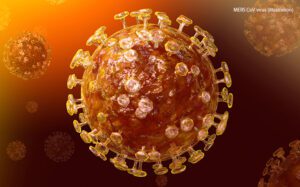High-consequence and antibiotic-resistant pathogens such as Ebola, influenza, Middle East Respiratory Syndrome coronavirus (MERS-CoV), multi-drug-resistant tuberculosis, and Methicillin-resistant Staphylococcus aureus (MRSA) are gaining traction worldwide. Researchers in SRI Biosciences’ infectious disease group are working to develop diagnostic tests, vaccines, and therapies that can help medical professionals around the world more effectively treat these frightening and deadly illnesses.

Among SRI’s contributions to this area is the identification of unique animal models that can help expedite research into infectious pathogens. The majority of research models used today let researchers explore subjects’ susceptibility to infection or the virus’ replication patterns, but they aren’t an adequate representation of what the disease actually does in humans. This significantly hinders researchers’ ability to rapidly evaluate or develop treatments and vaccines.
We have demonstrated success identifying unique research models that are more representative of human disease, including in Severe Acute Respiratory Syndrome coronavirus (SARS-CoV), influenza, Dengue, and measles. Most recently, we have begun developing a model that we believe may expedite the development of vaccines and treatments for MERS-CoV, a deadly disease that was first identified in humans just three years ago.
MERS-CoV infections are characterized by acute respiratory distress and can be fatal. Soon after the disease emerged in 2012, our lab began looking at cells from various species to determine if they could provide a good model of MERS-CoV infection and replication. Our research focused specifically on determining whether or not a certain protein, known as dipeptidyl peptidase 4 (DPP4), was present on the surface of these cells. Previous research completed by V. Raj and colleagues at Erasmus Medical School had identified DPP4 as the cellular receptor for MERS-CoV, meaning that the virus uses (and requires) this protein to enter and infect host cells.
Using multiple approaches, we eventually demonstrated that a cell line derived from the lung cells of American mink are susceptible to infection by MERS-CoV. Analysis of these cells shows that DPP4 is indeed present on the cells’ surface, and that it is able to mediate virus entry and infection of mink cells. This finding is significant, because it could provide researchers with a more reliable, expedient model with which to discover and develop MERS-CoV vaccines and treatments for humans. Already, studies using known DPP4 inhibitors have shown antiviral activity against MERS-CoV, revealing the potential to treat MERS with existing, licensed compounds. Future efforts include evaluation of the activity of currently licensed drugs for efficacy against MERS-CoV, and work focused on discovery of novel drugs and vaccine approaches to treat or prevent MERS disease in humans.
Research reported in this publication was supported in part by the National Institute of Allergy And Infectious Diseases of the National Institutes of Health under Award Number R43AI112221. The content is solely the responsibility of the authors and does not necessarily represent the official views of the National Institutes of Health.



